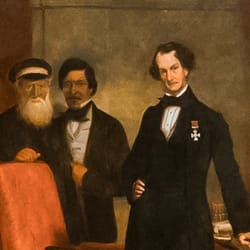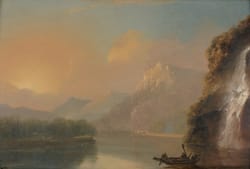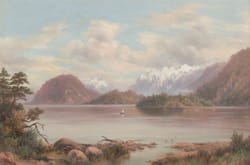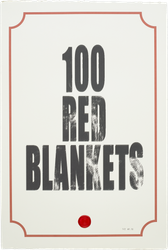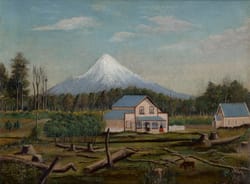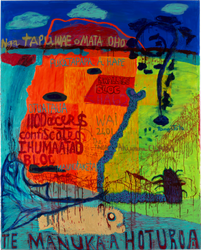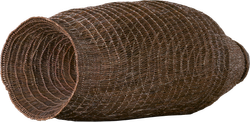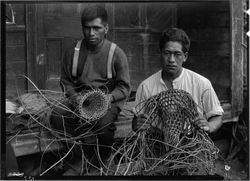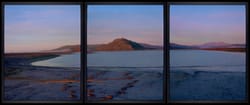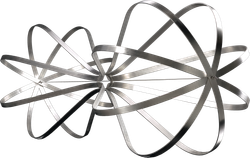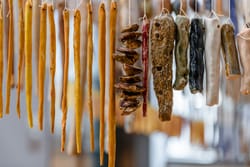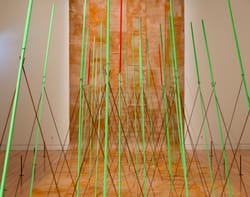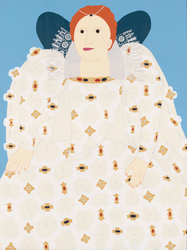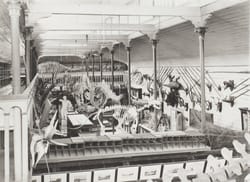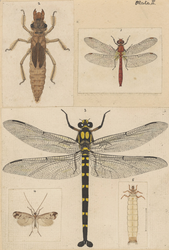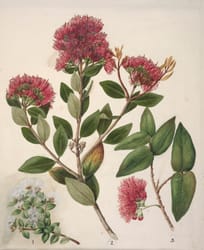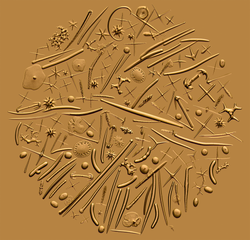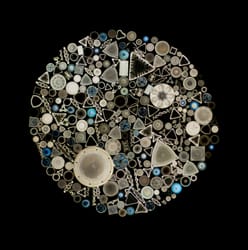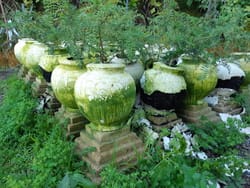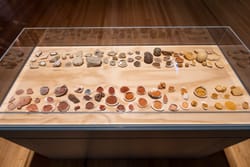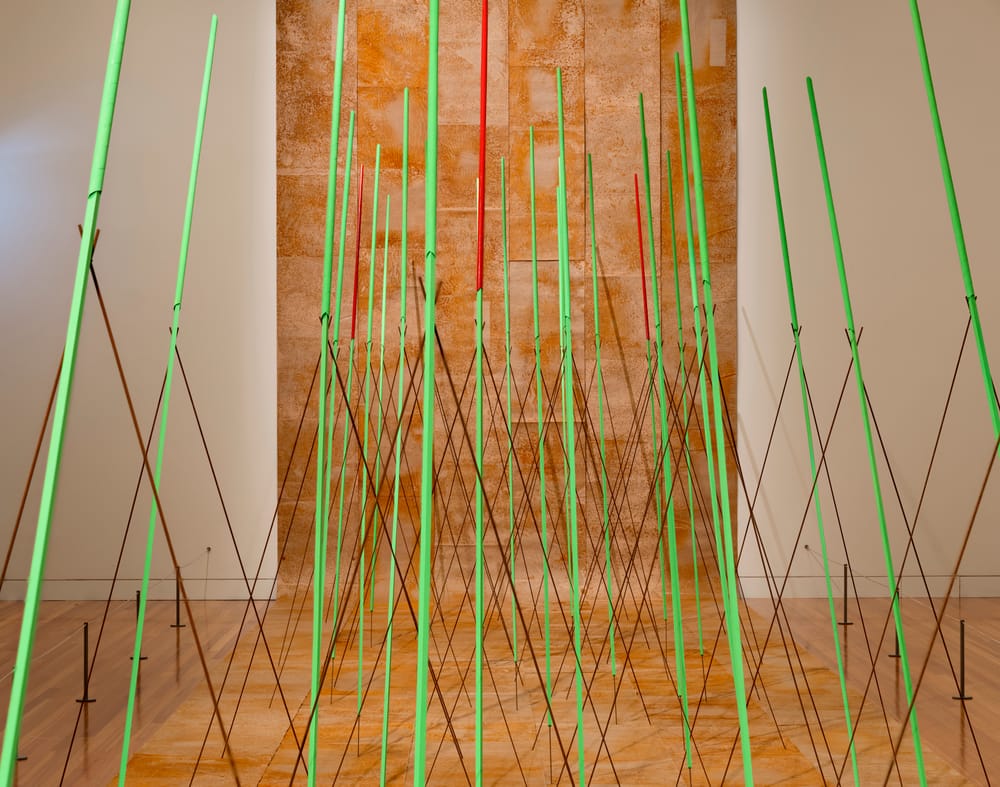
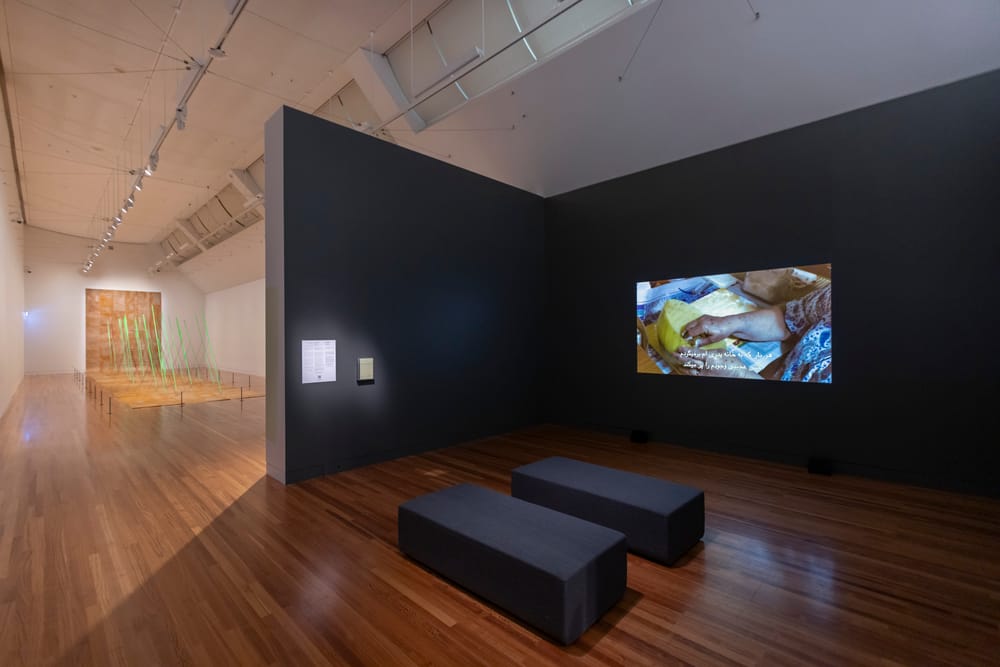
Close
MOANA
Kia ora Hanahiva. I'm Moana, I'm exploring the gallery today. How are you doing?
HANAHIVA
I'm well, thank you, and thank you for coming. It's lovely to see you. I'm Hanahiva Rose, and I'm the curator of ‘Yeki Bood Yeki Nabood’.
MOANA
And what would you like to show me in the space today?
HANAHIVA
In this exhibition we've got two artworks, one by Selina Ershadi and one by Pauline Rhodes.
The thing that most connects these artworks is the really careful attention the artists have paid to specific environments and landscapes that have special significance to them.
So, for Selina, that is Tehran and the surrounding Yazd Desert. And for Pauline, it's the Banks Peninsula, which is a place where she has worked for over 40 years.
MOANA
So right now we're standing in front of Selina's work.
HANAHIVA
Selina's film is called Amator, and it records the trip that Selina's mother Azita made to Tehran in 2019. And Selina had intended to go on this trip, but at the last minute wasn't able to. And so she gave Azita her camera and asked her to film her travel.
The film is in a mixture of Farsi and English and it has a voiceover that's read by Azita.
Azita's looking back and reflecting on her family history in Iran, and she's also thinking about the changes that have occurred in Iran in her lifetime, and in particular, following the 1979 Iranian revolution.
Definitely take your headphones off. The film has a really lovely soundtrack.
One of the pleasures, I think, of this film is hearing Azita talking with her sisters about her struggles to wrangle the technology and her uncertainty about using it. So there is, yeah, real delight, I suppose, in her, her approach to filmmaking.
MOANA
And so moving through to Pauline's piece, which at first glance is pretty incredible …
HANAHIVA
We're looking at Extensum/Extensor, which is an artwork by Pauline Rhodes from 1982.
And this is a site responsive installation, so it changes its scale depending on the space that it's been shown in.
Here we're showing it in our high stud galleries. So it's got a real height up the wall. And what we're looking at is sheets of rusted paper. On top of the paper are rods that Pauline calls ‘extensors’. And they point towards the far wall.
It creates this kind of arrow effect, I suppose, or a kind of sharp pointing towards the outdoors. And I really think of the extensors as straining towards the outdoors, as trying to get back there.
So these extensors were originally placed outside, in various locations around the Banks Peninsula as kind of temporary installations.
So Pauline places them in the landscape. She then brings them inside, and is interested in thinking about how our relationship to the extensors changes but also how the extensors bring the outdoors in with them.
MOANA
How should someone, what's the ideal way to experience this work, I guess?
HANAHIVA
I really encourage people to walk around this work and really to think about their own bodily relationship to the installation and in particular to the extensors.
So as you walk around the edge of the artwork, the extensors will flick in and out of view. And we can see how they layer on top of one another. So we get clusters of this bright green.
I think of the artwork, and my kind of motion around it, as being like walking through a landscape and seeing that landscape shift and change in relation to my body, and thinking about how my body responds in turn to that landscape.
Enjoy your time in the gallery.
MOANA
Thank you so much Hanahiva for sharing your knowledge and showing us around these works. Nō reira, me haere tāua, continue into the next gallery. The work I want to show you next is a very large portrait. You can't miss it.
